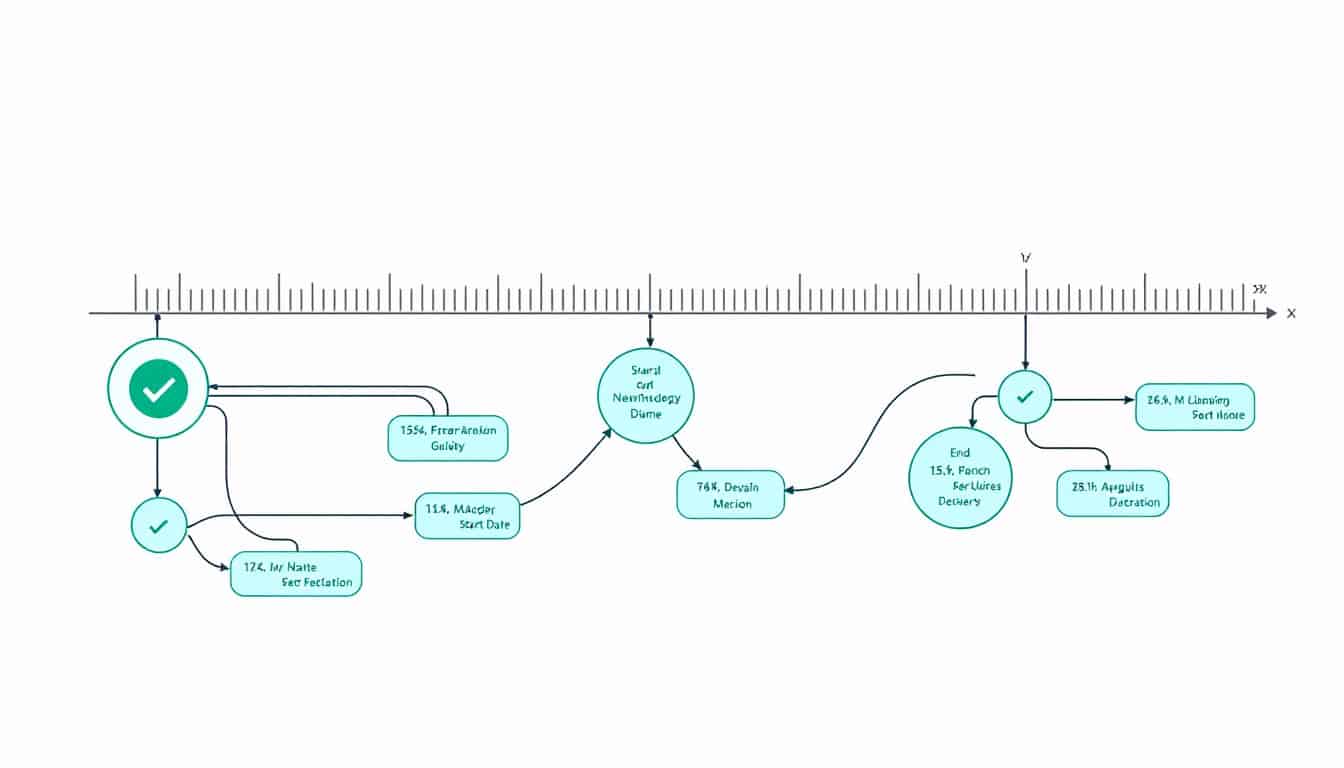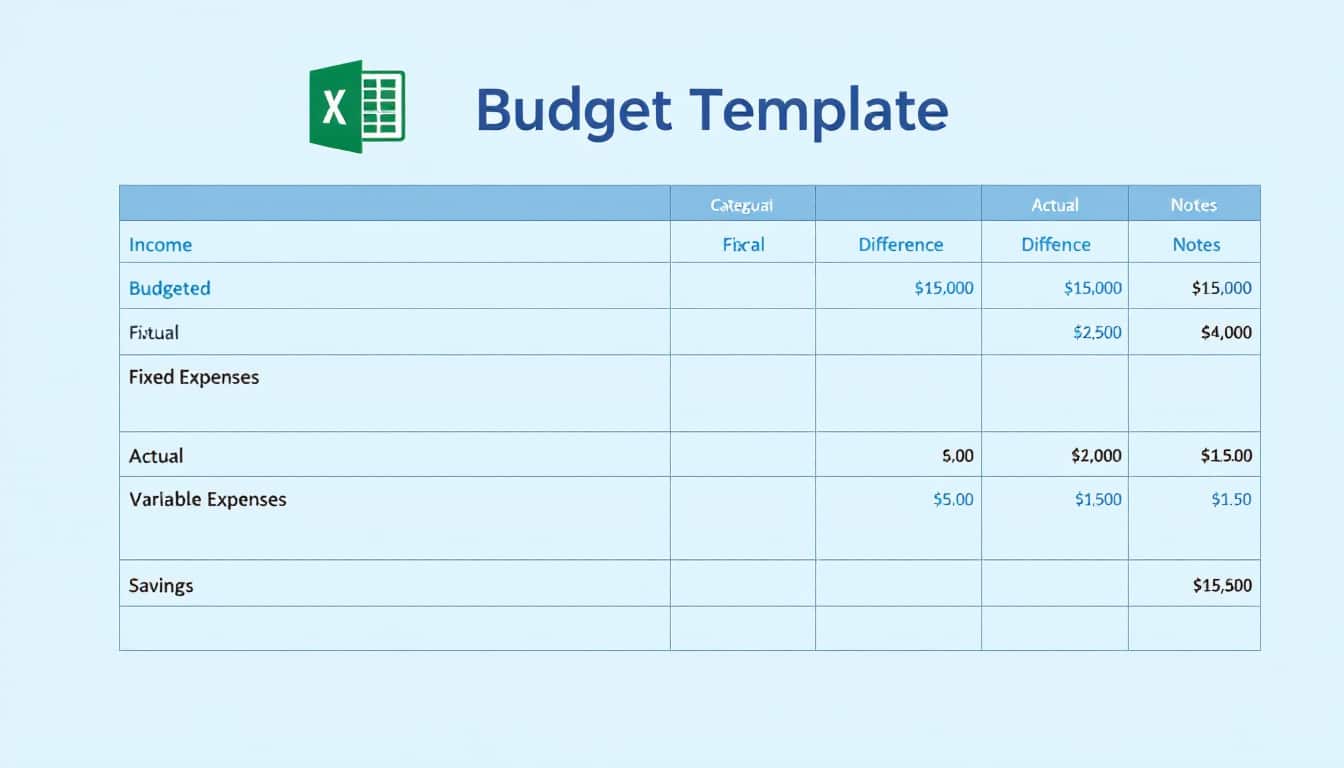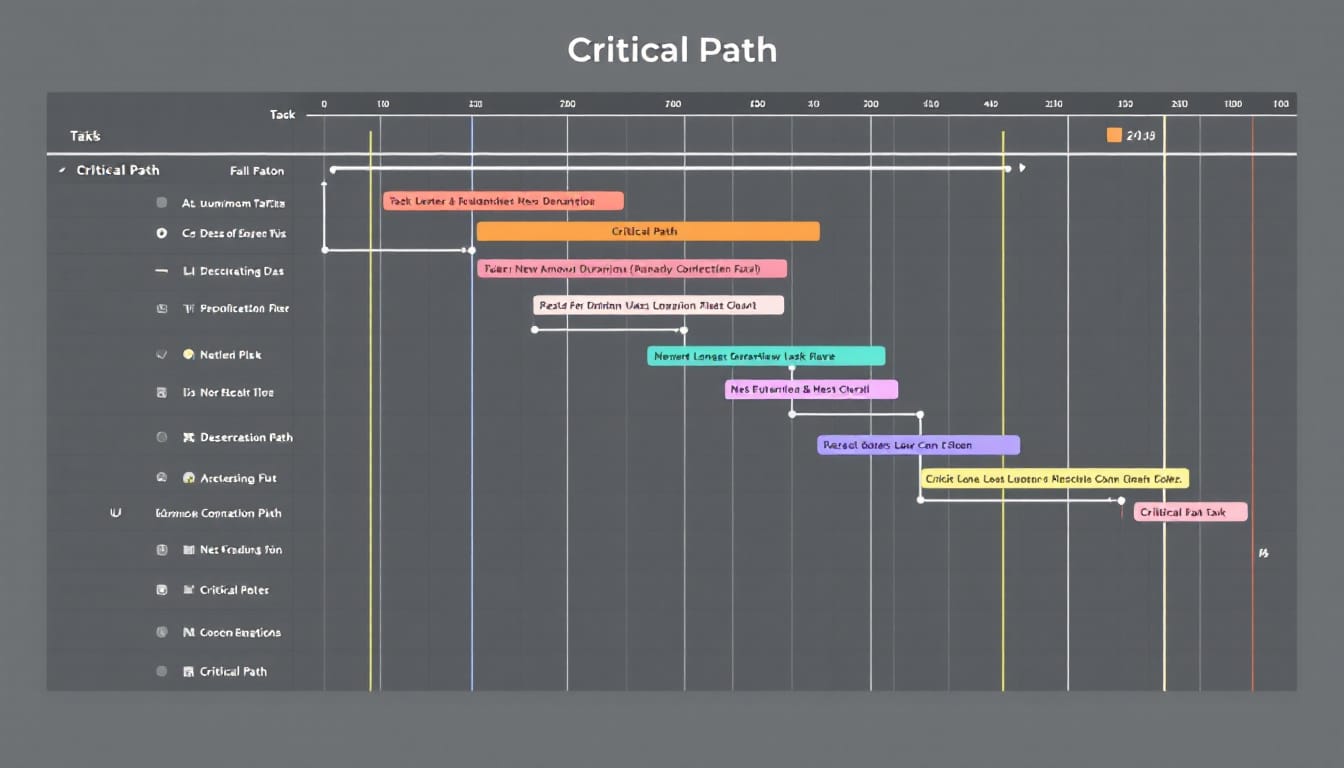“`html
🔥 Nous recommandons Ideamap
Ideamap est l’outil idéal pour un brainstorming ou un projet collaboratif. Grâce son interface facile et à ses fonctions IA, Ideamap booste votre créativité tout en favorisant une meilleure organisation de vos idées pour atteindre vos objectifs.
Goals are quite easily set, but achieving them takes work. Sometimes, that work is not enough, and project teams must understand why and how to regain momentum to reach their objectives. To do this, they use something called a needs assessment.
Understanding what a needs assessment is essential for any organization wishing to progress in a structured manner. This approach allows for the identification of gaps between the current situation and the desired outcomes. By assessing these needs, teams can develop effective strategies to bridge these gaps and optimize their performance.
What is a Needs Assessment?
A needs assessment is a systematic process aimed at identifying and evaluating the gaps between the current situation and the desired results. It helps organizations, teams, or individuals determine the resources, skills, or improvements necessary to achieve their goals. By understanding what is lacking or what needs improvement, decision-makers can prioritize actions and allocate resources effectively.
When to Conduct a Needs Assessment
Conducting a needs assessment at the right time ensures an efficient use of resources and decisions based on accurate information. Whether it is for planning a new initiative, improving existing processes, or resolving challenges, knowing when to conduct a needs assessment can make all the difference.
- Business Strategy & Market Research: Identify gaps in products, services, or market demand before making strategic decisions.
- Project Management: Define project requirements and ensure alignment with stakeholder expectations.
- Training & Staff Development: Determine skills gaps and design training programs for employees.
- Health & Public Services: Assess community needs regarding health, education, or social services.
- Education & Curriculum Design: Align courses with student learning needs and industry requirements.
- Technology & Systems Implementation: Assess user needs before deploying new software, tools, or infrastructure.
- Process Improvement & Quality Management: Identify inefficiencies and areas for optimization.
- Grant Writing & Policy Development: Justify funding requests and design effective policies based on the needs of the community or organization.
How to Conduct a Needs Assessment
Conducting a needs assessment requires a structured approach, allowing teams to collect relevant data, involve key stakeholders, and develop actionable solutions. Here are the seven steps to successfully carry out this process:
- Establish the Purpose and Scope of the Assessment: Define the reason for the assessment and what you want to accomplish. Clarify specific problems or opportunities and determine the boundaries of the assessment.
- Identify Key Stakeholders: Involve individuals or groups directly or indirectly affected by the assessment results, such as employees, managers, customers, or community members.
- Collect Data: Gather relevant information through surveys, interviews, focus groups, observations, or by reviewing existing data.
- Define the Gap Between Current and Desired State: Analyze the data to compare current conditions to ideal outcomes, thereby identifying insufficiencies and obstacles to achieving goals.
- Identify Deficiencies and Needs to Bridge the Gap: Determine specific problems to address, such as a lack of resources, insufficient training, inefficient processes, or missing infrastructure.
- Develop an Action Plan: Create a detailed plan outlining how to address the identified needs, defining specific steps, assigning responsibilities, setting deadlines, and allocating resources.
- Monitor and Report Progress: Establish a system to track progress and measure results, adjusting the plan as necessary to remain aligned with goals.
Example of a Needs Assessment
Consider a construction company wanting to improve its customer relationship and marketing positioning. After a needs assessment, it identifies gaps in communication with clients and the visibility of its services in the market. By prioritizing these needs, the company can recommend actions such as training sales teams and implementing new marketing strategies. A follow-up and evaluation section will measure the effectiveness of the actions taken.
Needs Assessment Template
Download this free needs assessment template to guide the process of identifying and evaluating the gaps between the current state and desired results. It provides a clear framework for data collection, result analysis, and developing actionable recommendations, thereby ensuring a consistent and thorough approach to your assessment.
Benefits of Conducting a Needs Assessment
- Informed Decision-Making: Provides data-driven insights to guide strategic planning and resource allocation.
- Efficient Use of Resources: Ensures that time, budget, and personnel are focused on the most critical needs.
- Improved Problem-Solving: Identifies root causes of challenges, leading to more effective solutions.
- Increased Stakeholder Engagement: Involves relevant stakeholders, fostering collaboration and support.
- Measurable Outcomes: Establishes clear benchmarks for tracking progress and assessing success.
- Risk Reduction: Minimizes the likelihood of project failure by addressing potential issues from the outset.
- Increased Accountability: Creates transparency and clarity regarding goals, responsibilities, and timelines.
Managing Needs Assessment Projects with ProjectManager
Managing a needs assessment and the resulting project requires more than just a template. Project management software provides tools to plan, manage, and track this dynamic work effectively. ProjectManager is an award-winning project and portfolio management software that streamlines planning, data collection, analysis, and reporting. It enables teams to collaborate, track progress, and turn insights into successful outcomes.
Effective Resource Allocation
To ensure that each phase of the assessment is conducted without delays or resource constraints, start by planning them on the Gantt chart. When onboarding the team, define their availability to optimize assignments. The workload chart, color-coded, simplifies visualizing overburdens or underutilizations of members.
Tracking Progress with Real-Time Dashboards and Reports
For the monitoring and evaluation phase of the needs assessment, many tools can help keep the project on track. Real-time project or portfolio dashboards display metrics such as time, cost, and workload in easy-to-read charts and tables. Customizable reports provide actionable insights and can be shared with stakeholders to keep them informed.
Content Related to Needs Assessment
There are other methods to identify gaps between the current situation and the desired future state, apart from the needs assessment. For those wishing to deepen their understanding, here are some related topics:
- How to conduct a gap analysis: Definition, steps & example
- Gap Analysis Template for Excel (Free Download)
- How to write an action plan (Example included)
- Root Cause Analysis: A Quick Guide
- 5 Whys Technique in Root Cause Analysis

What is a needs assessment?
A needs assessment is a systematic process aimed at identifying and evaluating the gaps between the current situation and desired outcomes. It allows organizations, teams, or individuals to determine the resources, skills, or improvements necessary to achieve their goals. By understanding what is lacking or areas needing reinforcement, decision-makers can prioritize actions and allocate resources effectively.
Through a needs analysis, it is possible to highlight areas where performance, knowledge, or resources are insufficient. It also helps organizations focus on the most critical needs to maximize impact and provide data-driven insights to guide planning, budgeting, and resource allocation. By optimizing the use of time and resources in this way, efficiency is improved by ensuring that initiatives undertaken directly address real needs.
Once the needs assessment has identified the gaps, priorities, and resources needed, project managers can translate these findings into actionable tasks and milestones. This can be visualized using a Gantt chart, often found in project management software, to create an accurate and effective project schedule. For example, value engineering in the construction sector demonstrates how a structured needs analysis can transform raw data into concrete action plans.
When to conduct a needs assessment?
Conducting a needs assessment at the right time is crucial to ensure effective use of resources and that decisions are based on accurate information. Whether during the planning of a new initiative, improving existing processes, or problem-solving, knowing the right moment to perform a needs assessment can make all the difference.
Typically, a needs assessment is conducted at critical decision points, such as the start of a project, during periods of organizational change, or when there are performance issues. By evaluating the current state and comparing it to the desired results, organizations can develop targeted strategies and avoid unnecessary expenditures or misaligned efforts.
For example, in project management, it is essential to understand the concept of a business case before launching an initiative. Similarly, a feasibility study can be indispensable for assessing the viability of a project by identifying critical needs and potential obstacles from the outset.
Here are some situations where it is appropriate to conduct a needs assessment:
- Business Strategy and Market Research: Identify gaps in products, services, or market demand before making strategic decisions.
- Project Management: Define project requirements and ensure alignment with stakeholder expectations.
- Training and Skills Development: Determine skills gaps and design training programs for employees.
- Health and Public Services: Assess community needs regarding health, education, or social services.
- Education and Program Design: Align courses with student learning needs and industry requirements.
- Technology and Systems Implementation: Assess user needs before deploying new software, tools, or infrastructure.
- Process Improvement and Quality Management: Identify inefficiencies and areas for optimization.
- Grant Writing and Policy Development: Justify funding requests and design effective policies based on the needs of the community or organization.
How to conduct a needs assessment?
Conducting a needs assessment is a structured process that follows a systematic approach to gather relevant data, involve key stakeholders, and develop actionable solutions. Each step in the process builds on the previous one, ensuring that the final recommendations are well-informed and aligned with organizational goals. Here are the seven steps to successfully conduct a needs assessment:
1. Define the purpose and scope of the assessment
Start by defining the reason for the assessment and what you hope to achieve. Clarify specific problems or opportunities you wish to address and determine the boundaries of the assessment. A clear purpose and scope ensure that efforts remain focused and actionable.
2. Identify key stakeholders
Involve individuals or groups directly or indirectly affected by the assessment results. This may include employees, managers, customers, or community members. Involving stakeholders early on allows for diverse perspectives and increases buy-in for the proposed solutions.
3. Collect data
Gather relevant information through surveys, interviews, focus groups, observations, or by reviewing existing data. Use both qualitative and quantitative data to get a complete overview of the current situation. Reliable data serves as the foundation for identifying and understanding the gaps.
4. Define the gap between current and desired state
Analyze the data to compare existing conditions to ideal outcomes. This step helps identify insufficiencies and what prevents the organization from reaching its goals. Visual tools like graphs and charts can make the gaps more apparent.
5. Identify deficiencies and needs to bridge the gap
Determine specific problems that need to be addressed to bridge the gap. This may include a lack of resources, insufficient training, inefficient processes, or missing infrastructure. Prioritize needs based on their impact and feasibility.
6. Develop an action plan
Create a detailed plan outlining how to address the identified needs. Define actionable steps, assign responsibilities, set deadlines, and allocate resources. A well-structured action plan provides a clear roadmap for implementation.
7. Monitor and report progress
Once the action plan is launched, establish a system to track progress and measure results. Regular reporting and feedback from stakeholders help ensure that the plan remains effective. Adjustments can be made as needed to keep efforts aligned with the goals.
To facilitate this process, tools like ProjectManager can be used to dynamically plan, manage, and track work, ensuring that each step is executed properly.
Example of a needs assessment
To better understand the concept and process of a needs assessment, let’s look at an example in the construction sector. This sector often faces complex challenges such as completion deadlines, unexpected costs, and fluctuating client requirements.
Imagine a construction company wanting to improve its project management processes. A needs assessment would begin by identifying gaps in team skills, technology tools used, and current management methodologies. By collecting data through employee surveys and performance analyses of past projects, the company can determine that the absence of effective collaborative tools and the lack of project management training are major obstacles.
From there, the company can develop an action plan to integrate new collaborative tools and offer specialized training to its staff. By using Gantt charts in ProjectManager, it can visualize implementation steps, assign specific tasks, and track progress in real time. This ensures that initiatives taken are targeted and effective, thus reducing the risks of cost overruns and delays.
Another crucial aspect is the ongoing monitoring of actions taken. For instance, after implementing the new tools, the company can use real-time dashboards to assess the impact of these changes on productivity and customer satisfaction. This monitoring allows for adjusting strategies based on results obtained, ensuring continuous improvement.
Needs assessment template
To facilitate the process of needs assessment, it is helpful to use a structured template. Download this free needs assessment template to guide your efforts in identifying and evaluating gaps between the current state and desired results. This template provides a clear framework for data collection, result analysis, and developing actionable recommendations.
By using a template, organizations can ensure a consistent and thorough approach to their needs assessment. This standardizes the process across different projects, ensuring that all relevant factors are considered in decision-making. Additionally, a well-designed template can be tailored to the specifics of each project, providing flexibility while maintaining a solid structure.
For example, a needs assessment template might include sections for:
- Defining the context and objectives of the assessment
- Identifying stakeholders and their roles
- Collecting and analyzing relevant data
- Identifying gaps and priorities
- Developing recommendations and an action plan
- Establishing monitoring indicators and reporting mechanisms
By adopting this type of template, teams can focus on the essentials without overlooking crucial steps, thereby maximizing the chances of success in their needs assessment.
Benefits of needs assessment
Conducting a needs assessment offers numerous benefits to organizations, helping them achieve their objectives through targeted solutions that lead to significant improvements. Whether for project planning, organizational development, or community initiatives, a needs assessment ensures that efforts are aligned with real needs. Here are some of the main advantages:
- Informed decision-making: Provides data-driven insights to guide strategic planning and resource allocation.
- Efficient use of resources: Ensures that time, budget, and personnel are focused on the most critical needs.
- Improved problem-solving: Identifies root causes of challenges, leading to more effective solutions.
- Increased stakeholder engagement: Involves relevant stakeholders, fostering collaboration and support.
- Measurable outcomes: Establishes clear benchmarks for tracking progress and assessing success.
- Risk reduction: Minimizes the chances of project failure by addressing potential issues early on.
- Increased accountability: Creates transparency and clarity regarding goals, responsibilities, and timelines.
These advantages contribute not only to the success of current projects but also to laying a solid foundation for future initiatives. By integrating a needs assessment into their process, organizations can continuously improve their practices and adapt to changes proactively.
How to manage needs assessment projects with ProjectManager
Managing needs assessment projects and the resulting initiatives requires more than just a template. Templates are helpful, but these static documents are not designed to handle the dynamic nature of projects. Project management software offers tools to effectively plan, manage, and track work. ProjectManager is an award-winning project and portfolio management software that simplifies planning, data collection, analysis, and reporting. It allows teams to collaborate, track progress, and ensure that actionable insights are turned into successful results.
Here’s how ProjectManager can help in managing needs assessment projects:
- Effective resource allocation: To ensure that each phase of the assessment is carried out without delays or resource constraints, plan them on the Gantt chart. When onboarding the team, define their availability to streamline assignments. For an overview of resource allocation, check the workload chart, which is color-coded, making it easy to spot overages or underutilizations.
- Tracking progress with real-time dashboards: During the monitoring and evaluation phase of the needs assessment, several tools can help keep the project on track. Real-time project or portfolio dashboards display metrics such as time, cost, and workload in easy-to-read charts and tables.
- Customizable reports: Create reports on status, gaps, timesheets, workload, and more to show progress and provide actionable insights. These reports can also be shared with stakeholders to keep them informed. Secure timesheets help keep projects on budget by monitoring labor costs.
- Multiple project views: ProjectManager offers different views, such as kanban boards and task lists, giving teams the tools they need to execute their work efficiently. Stakeholders can also monitor progress via the calendar view.
By using ProjectManager, teams can transform the needs identified during an assessment into clear and well-organized actionable plans. Robust Gantt charts link all types of task dependencies to avoid cost overruns. Additionally, the ability to set a baseline for tracking progress in real-time ensures that projects stay on track.
To learn more about how ProjectManager can transform your needs assessments into effective action plans, visit ProjectManager.
#>














